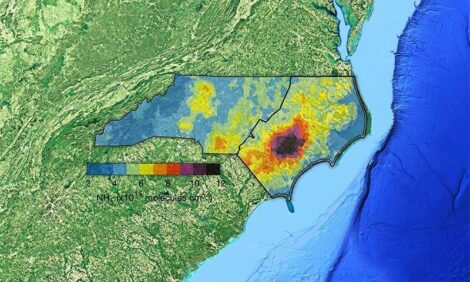



US Pork Outlook Report - November 2004
By U.S.D.A., Economic Research Service - This article is an extract from the November 2004: Livestock, Dairy and Poultry Outlook Report, highlighting Global Pork Industry data. The report indicates that Q4 hog prices are continuing well last year.
Record Per Capita Meat Consumption Expected in 2005
Larger supplies of red meat and poultry are expected to result in record-high per capita
meat consumption in 2005. Poultry meat production is expected increase to around 3 percent while pork production will likely increase about 1 percent.
|
Retail Pork Price
Percent change from previous month 
|
Hog trade with Canada will likely be affected as the U.S. Department of Commerce (DOC) returned a positive preliminary decision with respect to the National Pork Producer Council’s (NPPC) petition against imported Canadian slaughter hogs and feeder pigs. Antidumping penalties of about 14 percent are now being collected as Canadian swine come across the border.
The DOC will make final decisions about dumping penalties and countervailing duties in early March. A final finding of “injury” by the International Trade Commission (ITC) in late April 2005 would give any final determination of countervailing duties and/or dumping penalties by DOC, the force of law.
Fourth-Quarter Hog Prices Continue Well Above a Year Ago
Prices for 51-52 percent (live equivalent) hogs averaged $53.68 per cwt in October,
39 percent above a year ago, and fourth-quarter prices are expected to range
between $50 and $52 per cwt 38 percent higher than fourth-quarter 2003.
|
Weekly Hog Slaughter
Percent change from last year 
|
U.S. consumers are paying higher prices for pork products. Fourth-quarter retail pork prices are expected to continue to average in the high $2.80s per pound, about 7 percent above a year ago.
Imported Canadian Hogs Now Subject to Dumping Penalties
As reported last month (http://www.ers.usda.gov/Publications/LDP/), the DOC
returned a positive preliminary finding with respect to the petition of the NPPC et
al, charging that Canadian swine had been dumped in the United States in 2003
(http://www.ita.doc.gov/media/ FactSheet/1004/swine_101504.html).
As a consequence of the dumping penalties, which range from 13.25 percent to 15.01
percent, U.S. imports of Canadian hogs will likely be reduced in the
second half of 2005. From now until the DOC makes its final determinations
concerning countervailing duties and dumping in March and the ITC returns its
final injury decision in April 2005, import numbers are expected to change very
little. Buyers and sellers on both sides of the border are expected to wait for a final
disposition of the investigative process before making further production decisions.
It is expected however, that the flow of Canadian slaughter hog numbers will begin
to slow after settlement of the currently ongoing strike at Quality Meats in Ontario.
Also, because the dumping penalties are assessed on a value basis, it is expected
that imports of Canadian swine in 2005 will be comprised of a greater proportion of
lower valued feeder pigs. Another consequence of the dumping penalties and
slowing imports of Canadian swine is a likely increase in the quantity of Canadian
pork products imported by U.S. companies in 2005. U.S. pork imports next year
are expected to increase about 7 percent, to 1.2 billion pounds.
|
51-52 percent lean hogs (live equiv.), 2003 and 2004
quarterly prices

|
|
Quarterly U.S. commercial pork production, 2003 and 2004

|
Links
For more information view the full Livestock, Dairy and Poultry Outlook - November 2004 (pdf)Source: Livestock, Dairy and Poultry Outlook - U.S. Department of Agriculture, Economic Research Service - November 2004







